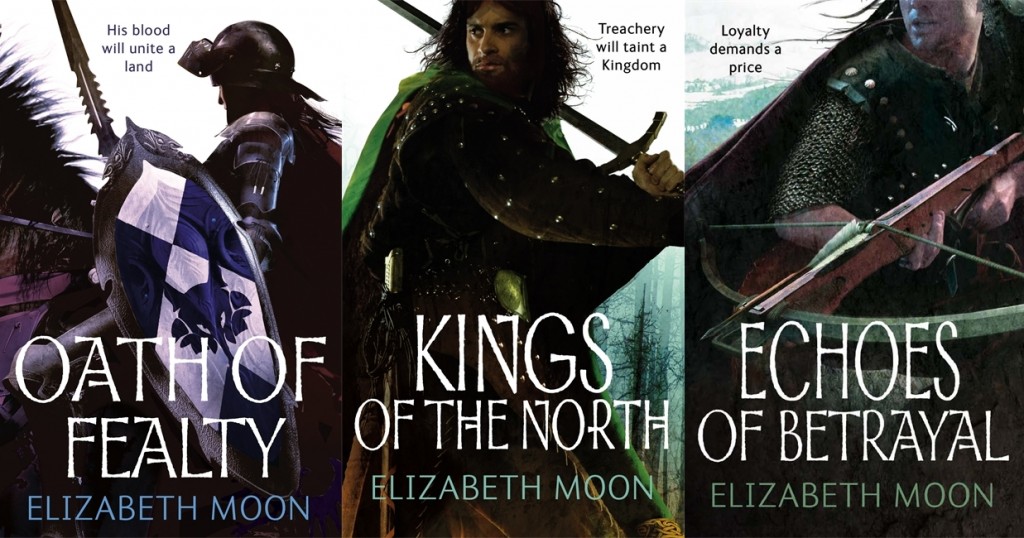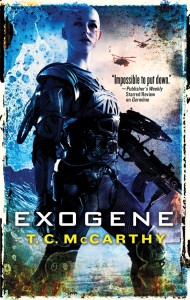T.C. McCarthy: On Screenplays
I’m reading an email; Orbit wants me to write screenplays – four of them – and my reaction is to write back “not just yes, but HELL yes.” Then I hit send. It’s only later, while I’m scraping ice and snow off the car that I realize what’s happened and that within a few months Jeremy Tolbert and Levi Thornton will have made four short films and that all will be based on what I write. Me. The concept is Jeremy’s idea but the scripts will be mine, and every word from the actors’ mouths will have come from my keyboard. I can’t call up Christopher Markus to ask for help and what would I ask anyway? “Hey, dude, would you mind critiquing my screenplays instead of working on the next Captain America script? I know you’re busy but, come on. Can’t that McFeely guy get around to it?”
Right.
***
It’s snowing again. If we get caught in Vermont, in the snow, there’s no way to tell how long we’ll be stuck. This makes me sad because it means an early departure. The kids are crying and my daughter wants to go skiing with me one last time, but everyone is exhausted and before I know it the house is quiet because all the kids have passed out barely making it to their beds. Now I can write. Now I can take the hours to read about how to format a screen play – because they have their own rules, their own look, their own way of conveying information to the actors and the audience. “(Beat)” means pause, for example, and script dialogue has to go in a certain place on the page. Jeremy is counting on me to hand in something incredible, something that will make it all worthwhile — thoughts that bring me to a terrorized state where it occurs to me: I can’t do it. They asked the wrong guy.
But now it’s too late to quit.
***
“Balmy?” I hear the neighbor say, “what the hell is ‘balmy?'”, but it must be the right word because the dogs are panting and I’m in my shorts despite the fact that it’s January in South Carolina and even we aren’t supposed to wear shorts in January. There’s no more patch. There’s no more patch. Quitting chewing tobacco leaves me with phantom pains, and now there are four scripts on my computer laughing at me because they know all I want is nicotine — something to take the edge off that voice, the one telling me that my work isn’t good enough.Maybe it isn’t. But there’s nothing left for it except to keep revising, to go over the words until I can’t see them anymore, and a few hours later my wife shakes me because I’ve fallen asleep in my chair.
***
The scripts are finished and I handed them in a few weeks earlier; it’s hard to say if they’re any good. Then I get an email while working on my next book, and it’s from the filmmaker with a link to a rough cut of the videos and everything becomes clear: why writing screenplays is so much fun. The actors give life to the words; the director has his/her own interpretation of the script and adds, music, lighting, camera angles — everything. Are these my scripts? What the hell is going on? The movies are so spooky that I start chewing my nails and wondering what will happen next, even though I know what will happen next. You might love these video-trailers too. You might not. If you haven’t read Germline or Exogene, you might get the sense that whatever my books are about, they’re not typical, futuristic military science fiction novels, and maybe they’re not. Maybe they’re books about the reality – the insanity – of the present and of the truth, a reflection of dark spots on my brain.






 Mid-series covers are at the same time a relief and a challenge. On one hand you already have the general look and feel of the art established, so a lot of the trial and error is skipped. Unless something has gone terribly wrong you are usually commissioning art from the same artist, and they start working a lot closer to the target. The type style is usually set, and overall it’s kind of fun to be able to play within those constraints. However you also can’t play it too safe and end up with boring art, or at least, art that isn’t pushed to its full potential. Because sometimes, especially in the case of a new author, the second cover is even more important than the first—you want to really show this author is establishing a strong series and the world is something you want to be drawn into. I know a lot of people—in fact, I am married to one—that won’t start a series if just the first book is out. (For example, he’s recently got into Game of Thrones on HBO and was really interested in reading the books until he heard it wasn’t a completed series…and yes, these are the fights that go on in my house) Thus, it’s really important to make mid-series covers as awesome, if not MORE awesome, than the first cover.
Mid-series covers are at the same time a relief and a challenge. On one hand you already have the general look and feel of the art established, so a lot of the trial and error is skipped. Unless something has gone terribly wrong you are usually commissioning art from the same artist, and they start working a lot closer to the target. The type style is usually set, and overall it’s kind of fun to be able to play within those constraints. However you also can’t play it too safe and end up with boring art, or at least, art that isn’t pushed to its full potential. Because sometimes, especially in the case of a new author, the second cover is even more important than the first—you want to really show this author is establishing a strong series and the world is something you want to be drawn into. I know a lot of people—in fact, I am married to one—that won’t start a series if just the first book is out. (For example, he’s recently got into Game of Thrones on HBO and was really interested in reading the books until he heard it wasn’t a completed series…and yes, these are the fights that go on in my house) Thus, it’s really important to make mid-series covers as awesome, if not MORE awesome, than the first cover.


